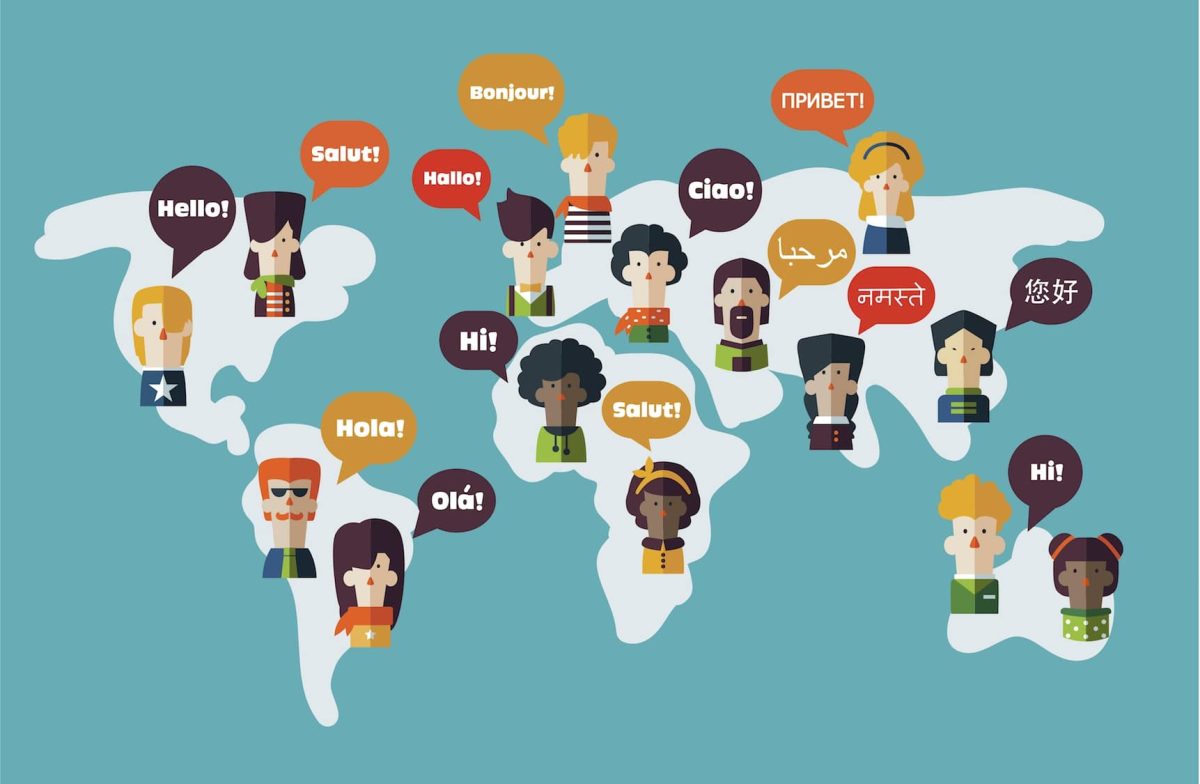According to Ethonologue, 7,117 languages are spoken worldwide. Languages are tools for expression and communication, and without them, society could simply not function. Learning multiple languages is extremely important, as it helps people extend their communication abilities and talk to different people across the globe. Language acquisition may come easily and seem natural, but how do we learn languages?
As humans, our minds were born with the framework to acquire and use languages. This means that as infants, humans have the mental capacity and ability to learn their first language without the formal, structured methods that adults use. Over the years, neuroscientists have been painstakingly investigating this process. When babies are born, they are born with billions of neurons, which are brain cells. Millions of these neurons control language. As the infant grows, the neurons form complex pathways to connect with other cells, and these pathways grow stronger and change when the baby hears their native language being spoken (extension.uga.edu).
According to Scientific American, at six months, an infant can learn the sounds that make up English words, and at age three, they can converse with another person. The study further reveals, “At birth, the infant brain can perceive the full set of 800 or so sounds, called phonemes, that can be strung together to form all the words in every language of the world” (scientificamerican.com). This process is more heavily experienced when the child is between six and twelve months old, and neuroscientists describe this as the “sensitive period.” In this stage, babies are ready to learn the sounds of their native tongue, such as vowels and consonants.
A significant factor in the acquisition of language is also interaction. Adults, such as parents and caretakers, play a vital role in talking to their children. The more a child is spoken to, the faster they acquire the language and recognize its patterns. When adults speak to babies, they typically speak more slowly, exaggerate the words, and raise the pitch of their voice. This is known as infant-directed speech, which helps make it easier for babies to discern word patterns and hear language (extension.uga.edu). Interacting with infants could include:
- Playing language games with them.
- Reading a story to them.
- Even socializing them with other children.
At Yorba Linda High School, one is required to take a foreign language class to graduate. While some may do the minimum, other students go above and beyond and find the true magic of languages. Megan Huynh (9) is a prime example of a multilingual student who understands English, Spanish, Chinese, and Vietnamese. Megan was taught English as a child and learned Vietnamese through her parents and community. She also took Spanish for two years in middle school and continues taking Chinese in high school. She conveys that “I believe being able to comprehend different languages will be able to have its benefits in the future. I feel as if there will be many opportunities to arise in the future that will let me put my knowledge of these four languages to use, whether it is to help foreign people or get job opportunities.”
The human brain is a powerful tool. Along with its ability to solve problems, have memories, process emotions, and perceive the world, its capacity to acquire and learn language is especially spectacular, even if it is at a very young age.





























